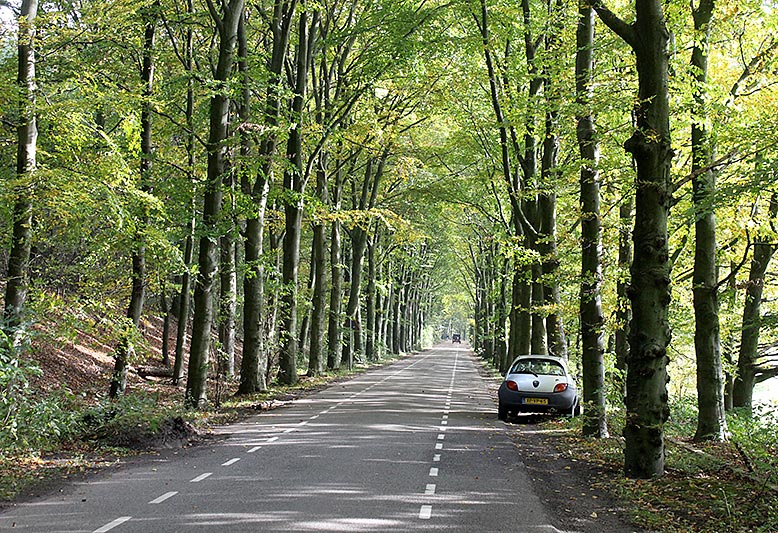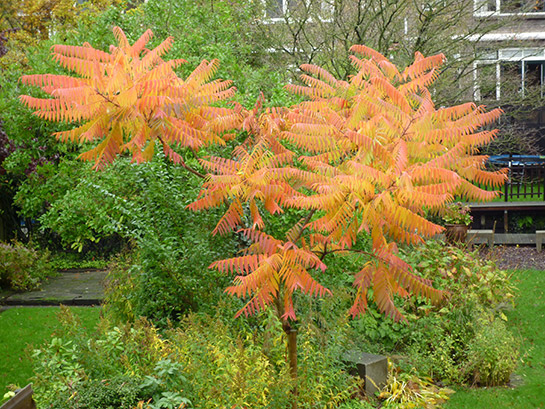Each time I visit an urban park I take note of the choice of plants in the design. Not just because I am interested in plant species or their aesthetic or sensorial qualities, but also because I an interested in the ethical and ecological notions behind a planting design. Questions like: do plants have ‘rights’? and what is a native and what is an exotic plant? impact ideologies and approaches to nature conservation, ecology and planting design. These questions have surfaced in the design competition for the Singel park in Leiden, won earlier this year by Lola Landscape architects from Rotterdam and Bureau Karst from Switzerland. Lola’s planting concept for the competition accentuates the diversity of green spaces around this six-kilometer long linear park by proposing a ‘necklace’ of different plantings featuring plants from around the world. Under the theme ‘cosmopolitan nature’, their idea is to showcase plant communities from international plant-geography zones similar to that of Leiden, from North and South America, South Africa, Madagascar, Australia, China and Japan. It promises a spectacular array of plant material on a scale unprecedented in a Dutch public park. The Leiden Hortus Botanicus, also situated in the park, has been invited to develop and manage the planting, an opportunity for the botanical garden to re-invent itself and its relationship to the city and the world in a new public park.

Despite the scale and originality of the idea however, it did not attract the unanimous approval in Leiden that other aspects of their scheme did. Doubts were raised about management and maintenance: would these exotic plants take over the park and out-compete native species? Ideological discussions also emerged. Why use ‘foreign’ plants? What was wrong with using plants which were native to the area? A political analyst might interpret this response as a reflection of the rise of populist political ideologies promoted by the likes of the PVV. This analysis might be newsworthy, but surely it would be too simplistic? Lets take a look at it.
Motivations for using native plants vary, from a simple interest and concern for local plants and biodiversity to adepts of concepts such as phytogeography and phytosociology. Phytogeography is the demarcation of plant species into specific plant districts around the world, determined by their biotic, abiotic and cultural landscape conditions. Phytosociology is the study of the relationships between individual species in these plant ‘communities’. Adepts of phytogeography and phytosociology promote the exclusive use of plants from the phytogeographic zones only. These concepts have increasingly influenced garden and landscape design in the last hundred years, leading to the Heemtuin movement in the Netherlands, and parks such as the Jac. P. Thijjse park in Amsteleveen by Chris Broerse and Koos Landwehr from the 1930s.
There is however, a major ethical problem with phytogeography and phytosociology. If we look at it from a bio-centric worldview, we humans are part and parcel of the natural world and all organisms have their own intrinsic value. We therefore have no fundamental right to decide the fate of another organism and the decision to contain plants within their phyto-geographical district must be deemed wrong as we are deciding for plants where they can and can’t grow, based on our own interpretation of where they are considered to belong or not. Phytogeography and phytosociology must then be seen as an anthropocentric approach as we are the ones determining where plants are to grow, based on our own insights, with ourselves and our own futures as the primary focus. This is fine, were it not that few adepts of phytogeography and phytosociology would consider themselves anthropocentric. There is also a more fundamental problem here: Who are we to decide they only ‘belong’ in one particular district and not in another? They may do well in specific phyto-geographic conditions and with particular neighbours, but who is to say they mightn’t do better in different circumstances on the other side of the globe? And if we were to apply the same rules to humans, wouldn’t we certainly be infringing on fundamental human rights? Suddenly a scientific concept starts to display political undertones. Concepts such as phytogeography have been linked to dubious political ideologies in the past: Jewish people were prohibited from gardening with native plants in Nazi Germany, a doctrine linked to the emergence of phytogeography and phytosociology.
Opponents of the Lola’s planting concept face another dilemma: how does one determine what is a ‘native’ and what is ‘exotic’? From the perspective of evolutionary biology the concept of ‘native’ and ‘exotic’ is certainly fluid. Plants and plant communities are anything but static organisms, developing and adapting to different circumstances over time. Native or exotic thus depends on when one starts and stops the deep-time clock. It is also a question of cultural history, particularly in the Netherlands. Many of the plants we now consider native, migrated here in the holds of cargo ships or war fleets or were introduced by new cultures, first from Europe, later elsewhere. Dutch nature has been termed a ‘mosaic of memories’ by the biologist Piet Schroevers, a curious inter-relationship between shifts in biodiversity and periods of discovery, trade and contact between the Netherlands and the rest of the world.
Plant ethics also plays out differently in different types of green space. In parks, planting design is not only about the choice of plants and plant communities for phyto-geographic goals, but also for spatial, temporal and sensorial effects in this most complex and fascinating of urban public spaces. Plant ethics in urban gardens, parkways, remnant landscapes and natural areas however, may be another question entirely. Lola’s winning design has re-opened the Pandora’s box of ethical and ecological problems for landscape architecture in planting design – something academics and practitioners need to explore and debate if they are to offer some alternative viewpoints to approaches based exclusively on science. To start the debate I propose we cease using the terms ‘native’ and ‘exotic’ and start a broader debate between botanists, gardeners, landscape architects, historians, anthropologists and philosophers on planting in the global metropolis.




